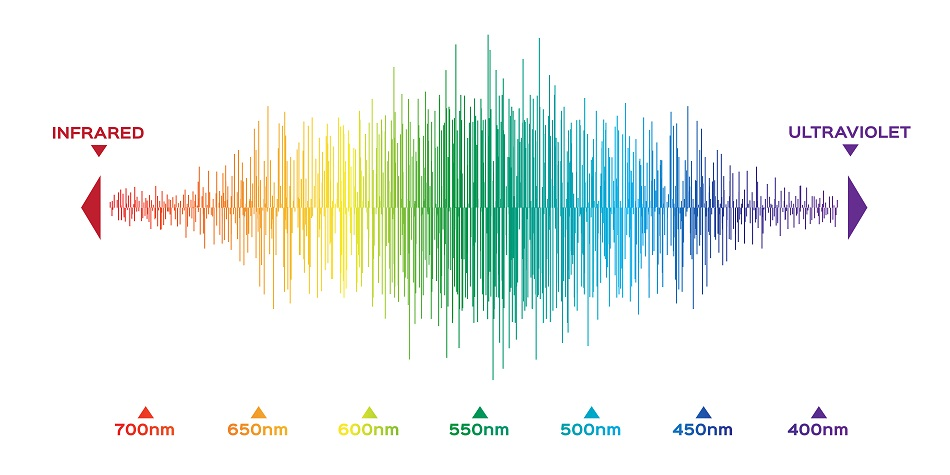Article updated on 27 January 2021

Image Credit: gritsalak karalak/Shutterstock.com
Raman spectroscopy is a technique of spectroscopy (the study of how matter interacts with electromagnetic radiation) first developed in the 1920s and 30s. Indian scientist C.V. Raman observed what became known as the Raman Effect in 1928 and was awarded the Nobel Prize in 1930 for his discoveries. Czech physicist George Placzek produced systematic pioneering research on the Raman Effect between 1930 and 1934, and researchers were quickly able to use the new technique to study the molecular structures and dynamics of matter.
While early Raman spectroscopes used gas lamps and mercury arcs as light sources, modern Raman spectroscopy utilizes lasers of varying wavelengths for this purpose. The most common wavelength used is 785 nm (near-infrared). However, visible light lasers (including green) are also used in Raman spectroscopy, as well as ultraviolet lasers. This article explains the technique of Raman spectroscopy and the various factors determined by wavelength (or color) of different lasers.
Raman Spectroscopy Technique
Raman spectroscopy can provide information about a specimen’s chemical structure and identity, phase and polymorphism, intrinsic stress or strain, and levels of contamination and impurity. It is a type of non-destructive analysis based on how light interacts with chemical bonds in the subject material.
When light is beamed onto the material from an emitting source (a laser), it is scattered through the material as it collides with molecules inside. The Rayleigh Scatter is light that is the same color (wavelength) as the light source, and so, it does not provide useful information. The Raman Scatter, however, is scattered at differing colors depending on the structure that is bonding molecules together in the subject material. Raman Scatter is only about 0.0000001% of all the light particles scattered through the material, but it contains valuable information.
A Raman spectroscope gathers all of the information produced in the Raman Scatter (wavelengths and intensity of scattered light) and displays it in a spectrum. This spectrum is a series of peaks determined by the wavelength and intensity of the Raman Scatter. These peaks are caused by different molecular bond vibrations which cause light to scatter in different wavelengths compared to the source. Determining and analyzing the peaks in a Raman spectrum provides extensive information about a material’s chemical structure, phase and polymorphy, crystallinity, and molecular interactions.
The information gathered from Raman spectroscopy is enough to accurately identify molecules within the material. The technique can also be combined with microscopy to enable researchers to study the minute changes in the molecular composition of certain materials.
Factors Determined by Laser Wavelength
Lasers used for Raman spectroscopy range in wavelength from ultraviolet (UV) colors shorter than 380 nm, through the visible light spectrum, to the near-infrared (near-IR) range longer than 750 nm. Selecting wavelength is one of several variables that must be accounted for when designing a Raman spectroscopy experiment or process.
The fact that the Raman signal is very weak is an important factor, and this varies depending on the material. The intensity of the Raman Scatter is inversely proportional to the fourth power of the illumination wavelength; the signal is significantly reduced as light source wavelength becomes longer.
Light source wavelength influences how sensitively the spectroscope can detect Raman scatter (with near-IR lasers losing detection sensitivity as they become longer in wavelength). It is also a determining factor for the spectroscope’s spatial resolution, with wider wavelengths producing results with less resolution.
At the other end of the spectrum, lasers used in Raman spectroscopy must also avoid excessive fluorescence emission which makes it impossible or very difficult to obtain usable results. The fluorescence emitted by some materials under short wavelength UV light is enough to drown the signal of the Raman scatters.
With all of these factors to consider – and the different specimen materials, availability and cost of equipment, type of sensors, and many more variables – no one wavelength can be suggested for Raman spectroscopy. The most common laser wavelength is 785 nm (near-IR), as it avoids fluorescence in most materials, is readily available, and decreased efficiency can be mitigated in various ways.
However, green lasers are increasingly used in Raman spectroscopy. In particular, green with a wavelength of 532 nm is used for certain inorganic materials such as nanotubes and fullerenes, in resonance Raman experiments, and surface-enhanced Raman spectroscopy (SERS).
Disclaimer: The views expressed here are those of the author expressed in their private capacity and do not necessarily represent the views of AZoM.com Limited T/A AZoNetwork the owner and operator of this website. This disclaimer forms part of the Terms and conditions of use of this website.